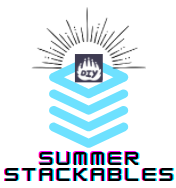Please find the elevator and venture pitch for this imagined venture hosted on the site below:
https://sites.google.com/view/summer-stackables/home
Featuring original research and analysis on emerging learning technology markets and ventures published as Open Educational Resources (OERs) by professional educators enrolled in the University of British Columbia's Master of Educational Technology (MET) program. Browse and be inspired!

Posted in (A3) Venture Pitch
Please find the elevator and venture pitch for this imagined venture hosted on the site below:
https://sites.google.com/view/summer-stackables/home
You must be logged in to post a comment.
FEEDBACK: Hi Alexis. I liked the detail you put into Summer Stackables and how it would work. I was curious about the partnership between DIY and School Stackables. Although you showed the merits of DIY later on, I wondered what School Stackables also offered in the partnership. I appreciated the input and detail you put for all the competitors; as a bonus, perhaps a table of checks and x’s on what each platform offers compared to yours can be more viscerally persuasive. Your personality and enthusiasm is evident inside the slides. Thanks for sharing!
Hi Alexis, I love this idea! Well done ????
Your elevator pitch is really compelling. I think the concept of microlearning in the summer is great, and it seems children (and parents) would be more likely to engage in small, more “doable” learning opportunities in the summer months, especially if those learning opportunities are targeted to what the learner needs.
I was unaware of what DIY is and had to research the platform – perhaps including some background on the partnership company would help potential investors better understand the company as a whole? As an investor I would also appreciate seeing some sales projections and what kind of figures a 5% equity would return.
With more a detailed explanation of the partnership and potential return on investment I would invest!
*The smiley face after well done turned into three question marks – sorry, please ignore.
FEEDBACK: Great idea and compelling pitch, Alexis! My one recommendation is to minimize the text in the video that doesn’t match your narration. I had to watch it twice, once to focus on sound, once to focus on the words, as I couldn’t take it all in at once since the sentence in the video didn’t match what was being said. Therefore, I wasn’t exactly sure what your product was until I watched it a second time and looked at your pitch deck. Maybe that’s just my brain though! Something I would like to know is if these microlearning lessons can be stacked towards credit for students? Thanks!
FEEDBACK:
I like this idea. I think your payment model is quite strong; you will get people hooked with just $2 per course (which is basically nothing) but this can lead to monthly subscriptions that are still affordable for most people. My only concern with the pricing would be that people sometimes judge the quality of something based on its price, so if a video is only worth $2, that could hurt it. I suppose it is a double-edged sword in that sense. I really like your emphasis on micro-learning and I think this is something people are getting more and more into. I really feel that there is a strong market for this in the future. One thing I wondered about is who your teachers/instructional designers are and how much they make. This is obviously an important aspect because you will have to pay them well if you want good quality content. Unfortunately, high teacher costs end up eating a lot of your revenue and thus you have to consider if your pricing is high enough.
FEEDBACK: Well designed presentation and Canva slides. I liked how concise your ideas were and how they just flowed naturally between the slides. The Ask/Return was done exceptionally well as from an investor’s perspective, I’m sure that will definitely get their attention. I would have liked to see a sample/course example in the “Why Summer Stackables?” section as that would have made the presentation stand out more and help differentiate your pitch (especially when you compare it to the other 4 competitors). Cost wise, I agree with Nathan as the low cost (which is good in theory/intention) might give the false impression in terms of quality. Either set the price similar to the competitors or adjust it slightly. Overall, it’s a wonderful and well put together pitch!
[FEEDBACK] Great elevator pitch, I most certainly am intrigued and got enough information to realistically ask for more information. The concept of continuing education, providing parents with a reliable source to give their children something to do over the summer is a really profitable one. The idea that the learning is short, and maintained within that microlearning idea I think is what makes this easily accessible to the purchaser. I don’t quite get what sets Summer Stackables apart from Khan Academy or other platforms like it? How many investors are you looking for in order to reach your goal? I might be more inclined at the 5% equity, or more, if the opportunity was there.
FEEDBACK: Hi Alexis. Great work on your venture pitch. I liked your elevator pitch – it was very professional and clearly laid out. I like how your venture deck provided really great information about your idea, market plan and clear financials. I think this is a really interesting idea. As I am not a K-12 educator, If I was to invest I would like to know a little more about summer school in general. What is the need for summer courses? Why do students enroll? Is there a certain target demographic of student that tends to enroll in summer school?